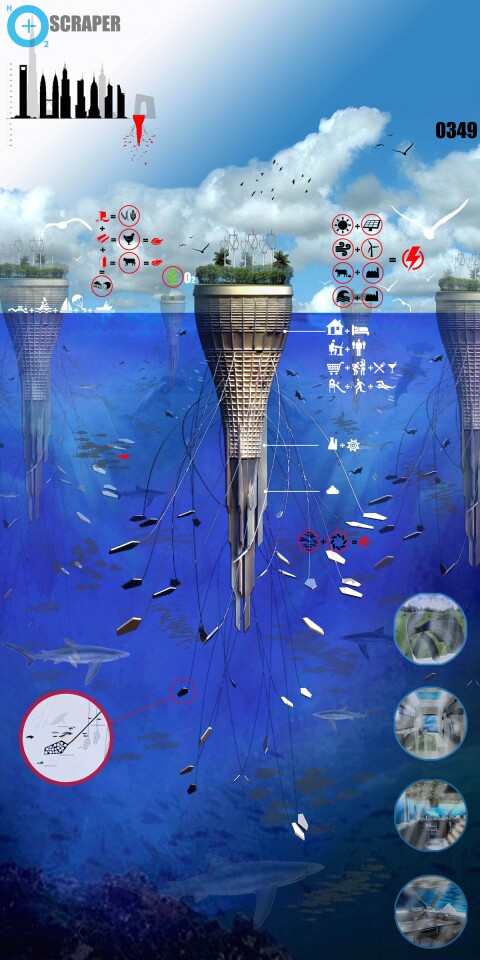As cities become more densely-populated, the trend for multi-dwelling complexes has been to build up – hence the advent of the highrise as we know it today. Building down doesn’t seem to be much of an option, as it would be very labor-intensive, and residents would justifiably freak out at the thought of living hundreds of feet below the surface of the Earth. Malaysian architect Sarly Adre Bin Sarkum, however, has proposed a multi-level building that goes down – into the ocean. While his hO2+ concept is pretty unlikely to ever be built, the imagination behind it was enough to merit a Special Mention in eVolo magazine’s 2010 Skyscraper Competition.
The top level of the hO2+ scraper would float on the surface, with the living quarters directly underneath. That way, residents would still get seawater-filtered sunlight shining through their windows, and would presumably worry less about drowning in the event of a leak. The rest of the building would proceed down to a depth equivalent to the height of the some of the world’s tallest highrises. Multiple tentacles with paddle-like bioluminescent tips would extend out from the building’s central “shaft,” both to attract marine life, and to generate power through their swaying movements.
“The hO2+ scraper proposes to break free of the urban fabric and functions as self-sufficient ambassadors in the sea,” the architect stated in his contest entry. “It is self sufficient as it generates its own power through wave, wind, current, solar, bio etc. and it generates its own food through farming, aquaculture, hydroponics etc. It carries with its own small forest on top its back and supports places for users to live and work in its depths [...] Such sustainability strategies aim to ultimately create and provide an oasis with ‘Zero’ negative impacts to the environment, not only that but also improves on it hence the ’Plus’.”

Besides a forest, the top level of the structure would also include space for crop and livestock farming, and wind turbines. Down at the very bottom, ballast and balancing tanks would keep everything upright. In some ways, it's reminiscent of the proposed NOAH floating megacity.
... and yes, there are indeed a thousand what-ifs and yeah-buts surrounding the concept. Comments on the eVolo website bring up issues such as tidal waves, claustrophobia, and the whole question of how the thing would be built. There also appears to be no means of propulsion, or of anchoring the building.
As an exercise in pure we’ll-work-out-the-details-later speculation, however, it definitely has some appeal.
Via InventorSpot, Inhabitat





